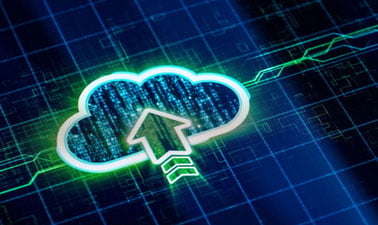- Level Foundation
- Ratings
- Duration 15 hours
- Course by IBM
- Total students 31,844 enrolled
-
Offered by

About
Please Note: Learners who successfully complete this IBM course can earn a skill badge "a detailed, verifiable and digital credential that profiles the knowledge and skills you've acquired in this course. Enroll to learn more, complete the course and claim your badge!
Begin your cloud computing mastery with this easy-to-follow, self-paced course. Gain the essential knowledge needed to understand cloud computing from a business perspective and as a hands-on cloud practitioner.
This course immerses you in the world of notable cloud service providers, including AWS, Google, IBM, and Microsoft. Explore their offered services and examine real-world applications through industry-specific case studies. You'll also dive into cloud adoption and its connection with technologies such as blockchain, analytics, and AI.
Discover the diverse cloud service models"Infrastructure as a Service (IaaS), Platform as a Service (PaaS), Software as a Service (SaaS)"and deployment models"public, private, and hybrid. You'll grasp the core elements of cloud infrastructure, including VMs, networking, storage types, and CDNs. You'll learn about emerging trends like Hybrid Multicloud, Microservices, Serverless, DevOps, Cloud Native, and Application Modernization. Learn the basics of cloud security, monitoring, and understand various roles in the cloud industry.
Throughout the course, you'll hear from subject matter experts who will share their insights into Cloud technology and work as a Cloud Practitioner.
You'll gain hands-on experience, having deployed an application on IBM Cloud"a shareable project that makes for an impressive employment portfolio addition!
Whether you're an executive, manager, student, or professional seeking familiarity with cloud computing terminology and concepts, or you aim for a solid grounding in cloud computing for a career as a cloud engineer, full stack developer, DevOps engineer, service reliability engineer, or cybersecurity analyst, this course is your starting point.
What you will learn
After completing this course, a learner will be able to:
- Define cloud computing and explain essential characteristics, history, the business case for Cloud, and the emerging technologies enabled by Cloud.
- Describe Cloud service models, including IaaS, PaaS, SaaS
- Describe Public, Private, and Hybrid Cloud deployment models.
- Explain Cloud infrastructure components.
- Explain emerging cloud-related trends, including Hybrid, Multicloud, Microservices, Serverless, Cloud Native, DevOps, and Application Modernization.
- List and describe services of popular cloud platforms, including AWS, Microsoft Azure, Google Cloud, IBM Cloud, Alibaba Cloud, and others.
Skills you learn
- Business Case
- Virtualization
- Infrastructure As A Service (IaaS)
- Microservices
- Software as a Service (SaaS)
- Cloud Infrastructure
- Cloud Computing
- Hybrid Cloud Computing
- DevOps
- Reliability Engineering
- Private Cloud
- Cloud Computing Security
- Cloud Services
- Serverless Computing
- Cloud-Native Computing
- Public Cloud
- Blockchain
- Cloud Engineering
- Platform as a Service (PaaS)
- Amazon Web Services
- Multi-Cloud
- Full Stack Development
- Cloud Computing Architecture
- IBM Cloud Computing
- Cyber Security
- Cloud Security Infrastructure
- File Explorer
- Cloud Security Architecture
Syllabus
Module 1: Overview of Cloud Computing
- Introduction and Learning Objectives
- Definition and essential characteristics of cloud computing
- Expert Viewpoints: Definition and Essential Characteristics of Cloud Computing
- History and Evolution of Cloud Computing
- Key Considerations for Cloud Computing
- Key Cloud Service Providers and Their Services
- Cloud Adoption - No Longer a Choice
- Expert Viewpoints: Cloud Adoption Benefits and Use Cases
- Cloud Adoption - Some Case Studies
- Internet of Things on the Cloud
- Artificial Intelligence on the Cloud
- Blockchain and Analytics on the Cloud
Module 2: Cloud Computing Models
- Introduction and Learning Objectives
- Overview of Cloud Service Models
- Infrastructure-as-a-Service
- Platform-as-a-Service
- Software-as-a-Service
- Public Cloud
- Private Cloud
- Hybrid Cloud
- Expert Viewpoints: Cloud Computing Service and Deployment Models
- Community Cloud
Module 3: Components of Cloud Computing
- Introduction and Learning Objectives
- Overview of Cloud Infrastructure
- Virtualization and Virtual Machines Explained
- Types of Virtual Machines
- Bare Metal Servers
- Secure Cloud Networking
- Containers
- Expert Viewpoints: Components of Cloud Computing
- Basics of Cloud Storage
- File Storage
- Block Storage
- Object Storage Overview
- Object Storage - Tiers and APIs
- Content Delivery Networks
- Expert Viewpoints: Cloud Storage
Module 4 - Emergent Trends and Practices
- Introduction and Learning Objectives
- Hybrid Multi-Cloud
- Microservices
- Serverless Computing
- Cloud Native Applications
- DevOps on the Cloud
- Application Modernization
- Expert Viewpoints: Cloud Native and Emergent Cloud Trends
Module 5: Cloud Security and Monitoring, Case Studies, and Jobs
- Introduction and Learning Objectives
- What is Cloud Security - Part 1
- What is Cloud Security - Part 2
- Policies and Principles of Access Management
- Identity and Access Management
- Cloud encryption
- Cloud Monitoring Basics and Benefits
- Cloud Monitoring Benefits
- Case Studies in Different Industry Verticals
- Career Opportunities and Job Roles in Cloud Computing
- Expert Viewpoints: Job Market for Cloud Computing
- Final Project: Deploy an application on the cloud
- HONORS Assignment: Architect a Cloud-based solution
- Final Exam
Auto Summary
"Introduction to Cloud Computing" by edX offers a comprehensive dive into AWS, Google, and IBM cloud services. Covering IaaS, PaaS, SaaS models, and cloud security, this 15-hour foundational course is ideal for executives, students, and aspiring professionals. Subscription options include Starter and Professional.

Rav Ahuja


